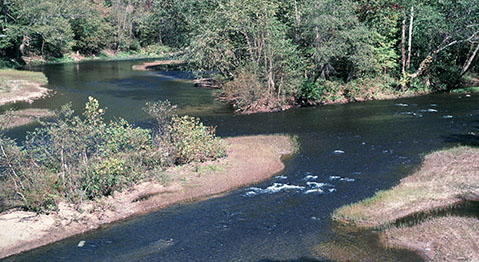
WASHINGTON – Sen. Ben Cardin called Tuesday for federal regulation and oversight of drinking water in the wake of the West Virginia chemical spill, which left residents exposed to chemicals and without water for days.
Chairing a hearing of the Environment and Public Works Subcommittee on Water and Wildlife, Cardin said safe drinking water is an interstate issue that must be addressed by the federal government. Current federal laws do not require regular updates on risks, or plans for protecting citizens, in areas where chemicals are stored.
It is difficult to know how many chemical storage tanks are located near water supplies in the United States, said witness Erik Olson, a strategic director for the Natural Resources Defense Council, and it is likely that hundreds of other water utilities would not be able to handle a spill like the one in West Virginia.
Cardin said the government’s first priority should be preventing these types of disasters.
“Our laws are just not strong enough to deal with the current situation,” said Cardin, a Maryland Democrat.
About 300,000 West Virginians were left without water when a storage tank leaked chemicals into the Elk River on Jan. 9.
The spill, which involved two chemicals, 4-methylcyclohexane methanol (MCHM) and PPH, came from storage tanks owned by Freedom Industries, a company whose plant is just a mile and a half upriver from a water source for a major utility.
Residents in Charleston and surrounding areas could not drink, cook with or bathe using the water for days, and many remain concerned about the long-term effect of chemical exposure. The Centers for Disease Control and Prevention have said the water is safe to drink but recommended that pregnant women continue to drink bottled water until the levels of chemical in the water are “non-detectable.”
In Maryland, drinking water for major population centers, including Baltimore and Prince George’s County, comes from out of state, either traveling down the Potomac River from a reservoir in West Virginia or coming from the Susquehanna River from sources in Pennsylvania.
“Our biggest concern is the Maryland laws can’t impact what goes on in Pennsylvania or D.C. or Virginia,” said Sue Walitsky, communications director for Cardin. “Not having control of those water sources (makes) it important for Maryland especially that we have a national standard.”
Committee Chair Sen. Barbara Boxer, D-Calif., and Senators Joe Manchin and Jay Rockefeller, both West Virginia Democrats, introduced legislation last week aimed at protecting drinking water.
The Chemical Safety and Drinking Water Protection Act would require every state to make risk assessments at chemical facilities, plan for state inspections and prepare for emergencies, Boxer said.
Cardin said the current regulatory system, which hadn’t required a risk assessment of the area by the state since 2002, failed in the West Virginia crisis. That assessment did not list the risks of MCHM.
“In West Virginia… a lot of different things could’ve been done if that information was available and we’d acted on that information,” he said.
West Virginia congress members, state politicians and environment and chemical experts testified about the protection of drinking water and the impact of the spill in the state.
“We need answers now,” said West Virginia Secretary of State Natalie Tennant. She said the spill is still causing problems for businesses and tourism and anxiety among residents.
Above-ground chemical storage tanks like the one that leaked into the Elk River sit all over the U.S., but both Olson and R. Peter Weaver, vice president of government affairs for the International Liquid Terminals Association, whose members include chemical-owning companies, said they don’t know how many of them there are.
“It’s basically impossible to know that right now, but we’ve reviewed literally scores of these sourcewater assessments and virtually every one of them has some storage tanks that are near… the surface water supplies, often done because it’s convenient,” said Olson, of the Natural Resources Defense Council.
Boxer said more than 80,000 chemicals are out there that could become potential pollutants.
“We’ve got a massive problem, and we don’t know how massive it is,” Boxer said.


You must be logged in to post a comment.